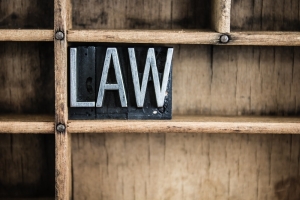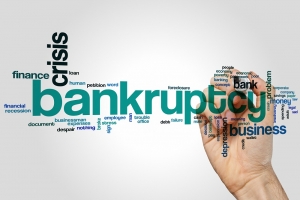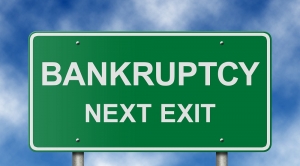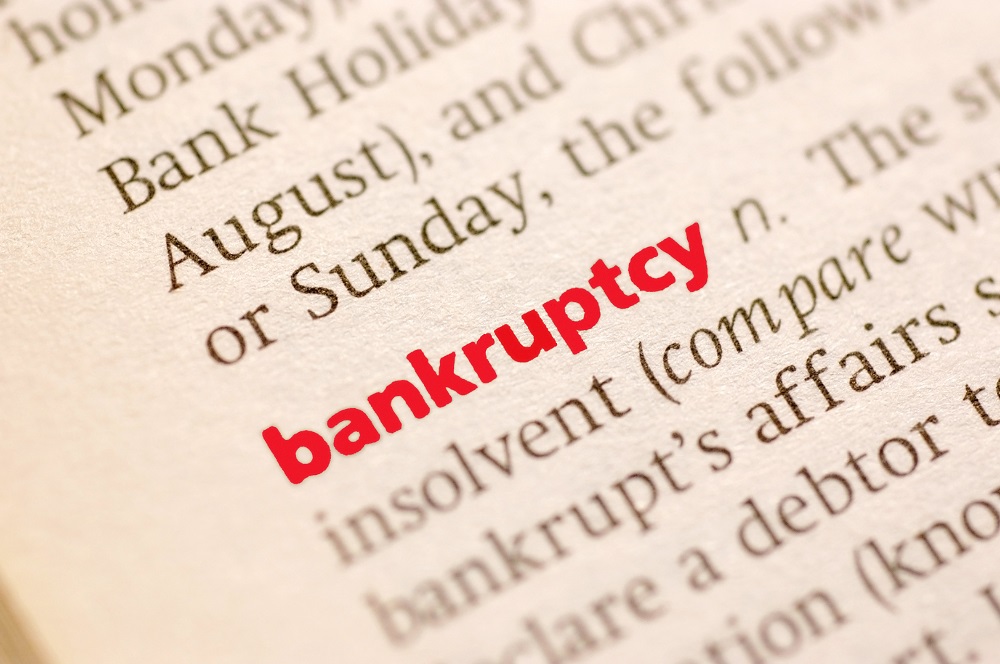Introduction to the Automatic Stay
 After a bankruptcy proceeding takes place, the debtor’s debts will be discharged and the debtor will no longer be financially liable for these debts. Granted, this will vary depending on the type of bankruptcy filed and the types of debts that the debtor has but overall the end result will be pretty similar. While that is all great for the debtor after the proceeding, what about during the proceeding? Some bankruptcy proceedings could take months or even years to complete, and if a person is filing bankruptcy – they are clearly in a financial bind. So what is the debtor supposed to do in the meantime while the proceeding is taking place? That is where the automatic stay comes into play.
After a bankruptcy proceeding takes place, the debtor’s debts will be discharged and the debtor will no longer be financially liable for these debts. Granted, this will vary depending on the type of bankruptcy filed and the types of debts that the debtor has but overall the end result will be pretty similar. While that is all great for the debtor after the proceeding, what about during the proceeding? Some bankruptcy proceedings could take months or even years to complete, and if a person is filing bankruptcy – they are clearly in a financial bind. So what is the debtor supposed to do in the meantime while the proceeding is taking place? That is where the automatic stay comes into play.
What is an automatic stay and how does it affect pending debts?
An automatic stay arises as soon as a bankruptcy is filed.[i] The automatic stay acts similar to an injunction and puts payment or collection of debts on hold for a given time period. Once the automatic stay is in place, the debtor is protected from their creditors collecting on the various debts during the bankruptcy proceeding and does so immediately.[ii] Once a person files for bankruptcy, they are already in a tough financial spot, and might be at risk of getting evicted, or losing basic necessities. The automatic stay is a safety net for people in that rough situation. Now, the automatic stay will affect various debts in different ways. For example, when an automatic stay goes into effect, a utility company cannot disconnect the debtors water, electric, gas, or even telephone services for at least 20 days.[iii] This could be incredibly helpful in Alaska during the winter months, or Arizona during the summer months. Some automatic stays could last less than or longer than those 20 days, depending on the type of debt.
An automatic stay can also help prevent an eviction or a foreclosure from proceeding when a debtor files for either Chapter 7 or Chapter 13 bankruptcy.[iv] Under a Chapter 7 bankruptcy, a trustee
is assigned to the debtors case to liquidate as many assets as possible to raise funds for the debts owed.[v] The automatic stay can provide the trustee more time to raise funds and the debtor more time to pay the delinquent loan that was putting him in danger of eviction or foreclosure. Under a Chapter 13 bankruptcy, the debtor undergoes a repayment plan that typically takes place between three to five years. During that time, the debtor can have some relief from payments while they wait for the court to approve a repayment plant. The time frame of the automatic stay will depend on the debtor’s specific case but even a few weeks could be incredibly beneficially for a person with financial strains. After the automatic stay ends, the debtor will resume payments on the mortgage, just like the other debts, but the mortgage payments will generally remain the same – while the other debts may be reduced from what was previously being paid.
An automatic stay can also stop any wage garnishments against the debtor.[vi] Some debtors may have more than one wage garnishment in place, so
an automatic stay could be very helpful, especially since the automatic stay goes into effect immediately.[vii] On average, no more than 25% of a debtor’s income can be taken to satisfy court judgments but up to 50% can be taken for child support and alimony.[viii] For a debtor with an already low income, even 25% of that debtor’s bank account could be devastating.
Exception to the Automatic Stay
 While the automatic stay stops a lot of different type of creditors from collecting, there are limitations to the automatic stay. One creditor that the automatic stay cannot prevent from collecting is the IRS.[ix] The IRS will still able to complete an audit against a debtor and even demand a tax return from the debtor.[x] The automatic stay does however prevent the IRS from issuing a tax lien or even seizing property or income from the debtor.[xi] The next type of action that will not be stopped by an automatic stay is a lawsuit against the debtor that seeks to establish paternity or to establish, modify, or just collect child support.[xii] Another action that is not stopped by the automatic stay is anything from a criminal proceeding. For example, if you are convicted of a crime that requires you to pay a fine – that person must still pay the fine and the automatic stay will not go into place for that debt.[xiii]
While the automatic stay stops a lot of different type of creditors from collecting, there are limitations to the automatic stay. One creditor that the automatic stay cannot prevent from collecting is the IRS.[ix] The IRS will still able to complete an audit against a debtor and even demand a tax return from the debtor.[x] The automatic stay does however prevent the IRS from issuing a tax lien or even seizing property or income from the debtor.[xi] The next type of action that will not be stopped by an automatic stay is a lawsuit against the debtor that seeks to establish paternity or to establish, modify, or just collect child support.[xii] Another action that is not stopped by the automatic stay is anything from a criminal proceeding. For example, if you are convicted of a crime that requires you to pay a fine – that person must still pay the fine and the automatic stay will not go into place for that debt.[xiii]
An automatic stay will only last 30 days if the debtor had a pending bankruptcy proceeding within the last year.[xiv] Unless the trustee or the debtor can prove to the court that the proceeding was filed with good faith, that automatic stay will remain a short 30 days across the board. Now, if a debtor has filed two or more bankruptcy proceedings in the past year – the automatic stay will never trigger or go into place.[xv] A person who files bankruptcy that often is usually referred to as a “serial filer”, and it can be presumed that they file because of the benefits from the automatic stay. The debtor can try to persuade the court that all the bankruptcy filings were done with good faith, and the debtor must do so by clear and convincing evidence.[xvi] If the court decides that the debtor did not act in bad faith by filing multiple bankruptcies during the year, the court can enforce the automatic stay.
It is important to note that sometimes there is no way around filing multiple bankruptcies within the same calendar year. This is especially true for a debtor who files for a Chapter 7 bankruptcy but the court determines that either the debtor’s income is too high or they do not qualify for some other reason.[xvii] In that case, the court will ask the debtor to file for Chapter 13 bankruptcy – if the debtor still wants to proceed with the bankruptcy proceeding. If the debtor does want to continue, they will then be filing for the second time for bankruptcy. So, ordinarily the automatic stay will only last for 30 days for a debtor who files two bankruptcies within a year – but this circumstance is an exception to that rule.
Terminating or Modifying the Automatic Stay
 Even if an automatic stay has been put into place, it can be removed for a number of reasons. One of those ways is if the creditor files a motion with the court and asks for the court to lift the stay.[xviii] This will allow the creditor to continue collecting on the debt while the debtor goes through the bankruptcy proceeding. The debtor is entitled to file a response to the motion, and the court will hold a hearing to determine whether or not to lift the stay.
Even if an automatic stay has been put into place, it can be removed for a number of reasons. One of those ways is if the creditor files a motion with the court and asks for the court to lift the stay.[xviii] This will allow the creditor to continue collecting on the debt while the debtor goes through the bankruptcy proceeding. The debtor is entitled to file a response to the motion, and the court will hold a hearing to determine whether or not to lift the stay.
When it comes to a Chapter 13 bankruptcy proceeding, the court can lift the automatic stay so a creditor can proceed with a foreclosure – but this can only happen if the court has yet to approve the repayment plan for the debtor.[xix] Once the court has approved the repayment plan for the debtor, even if the court had previously lifted the automatic stay, the court will not lift any automatic stays still in place after the repayment plan has been enforced.[xx] Now, if the debtor does not make timely payments as dictated by the repayment plan – the creditor can then proceed with a foreclosure on the property or land in question.
There is also the option of modifying the automatic stay. This is done through an agreement between the debtor and the creditor and it must be approved by the bankruptcy court.[xxi] These type of agreements, known as stipulations, avoid a lengthy proceeding that would take place if the creditor just petitioned to court to lift the stay. The stipulations also avoid all the costs associated with the formal proceeding that typically takes place – which is a great option for debtor’s in the bankruptcy proceeding since finances are already a grave concern.
Losing an Automatic Stay
Just because a debtor has been granted an automatic stay with their bankruptcy proceeding does not mean that it will remain in place. If a debtor has a secured debt – which is when a creditor has a right in a piece of property if the debtor fails to pay – the debtor has to file what is called a Statement of Interest with the court and it must be served on the creditor.[xxii] The statement will list what the debtor plans to do with the secured property. The typical options include giving the property back to the creditor (surrendering), keep the property and pay the creditor the cost for the creditor to replace the property (redeeming), or keep the property and reaffirm the contract.[xxiii] If the debtor reaffirms the contract, the debtor will be unable to discharge that debt through the bankruptcy proceeding and will remain financially liable to the creditor for the debt.
The debtor must mail the Statement of Interest to the creditor within 30 days of filing for bankruptcy.[xxiv] The court also expects the debtor to follow through with whatever option the debtor chose and the debtor must do so within 30 to 45 days after the first creditor’s meeting. If the debtor fails to meet these deadlines, the automatic stay will no longer apply to the property in question.[xxv]
Conclusion
 When a person decides to file for bankruptcy, they are already in a financially dire situation and likely need a remedy as soon as possible. While the bankruptcy proceeding, either Chapter 7 or Chapter 13, provide a long term solution for the debtor – many debtors need immediate relief from their creditors. For some debtors, it is unrealistic for them to wait even weeks for a bankruptcy petition to be approved because the creditors are already coming after their homes, cars, or other property. The automatic stay that the bankruptcy court provides is exactly what debtors need to keep the creditors off their back while they work out a new game plan for tackling their debts. So long as the debtor is acting in good faith with their bankruptcy petition, and they follow all the necessary deadlines, the automatic stay will provide a much needed relief for a debtor in a tough financial situation.
When a person decides to file for bankruptcy, they are already in a financially dire situation and likely need a remedy as soon as possible. While the bankruptcy proceeding, either Chapter 7 or Chapter 13, provide a long term solution for the debtor – many debtors need immediate relief from their creditors. For some debtors, it is unrealistic for them to wait even weeks for a bankruptcy petition to be approved because the creditors are already coming after their homes, cars, or other property. The automatic stay that the bankruptcy court provides is exactly what debtors need to keep the creditors off their back while they work out a new game plan for tackling their debts. So long as the debtor is acting in good faith with their bankruptcy petition, and they follow all the necessary deadlines, the automatic stay will provide a much needed relief for a debtor in a tough financial situation.
[i] See How Bankruptcy Stops Your Creditors: The Automatic Stay. NOLO Legal Encyclopedia. (Accessed April 29, 2016). https://www.nolo.com/legal-encyclopedia/how-bankruptcy-stops-creditors-automatic-29723.html
[ii] Id.
[iii] Id.
[iv] See Bankruptcy’s Automatic Stay and Foreclosure. NOLO Legal Encyclopedia. (Accessed April 29, 2016). https://www.nolo.com/legal-encyclopedia/bankruptcy-automatic-stay-foreclosure.html
[v] Id.
[vi] See How Bankruptcy Stops Your Creditors: The Automatic Stay. NOLO Legal Encyclopedia. (Accessed April 29, 2016). https://www.nolo.com/legal-encyclopedia/how-bankruptcy-stops-creditors-automatic-29723.html
[vii] Id.
[viii] Id.
[ix] Id.
[x] Id.
[xi] Id.
[xii] Id.
[xiii] Id.
[xiv] Id.
[xv] Id.
[xvi] Id.
[xvii] Id.
[xviii] Id.
[xix] Id.
[xx] Id.
[xxi] Id.
[xxii] See Losing the Automatic Stay: Missing Deadlines for Handling Secured Debts. NOLO Legal Encyclopedia. (Accessed April 29, 2016). http://www.nolo.com/legal-encyclopedia/losing-the-automatic-stay-missing-deadlines-handling-secured-debts.html
[xxiii] Id.
[xxiv] Id.
[xxv] Id.





